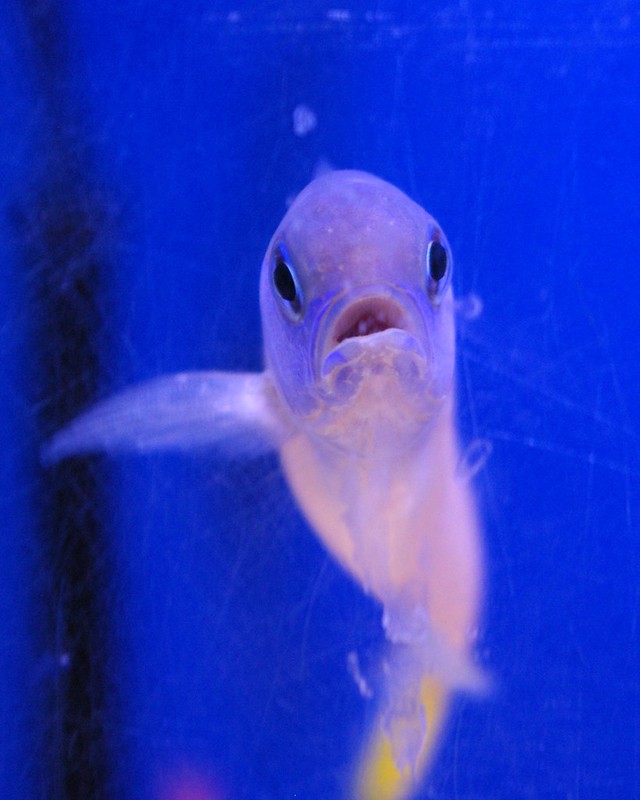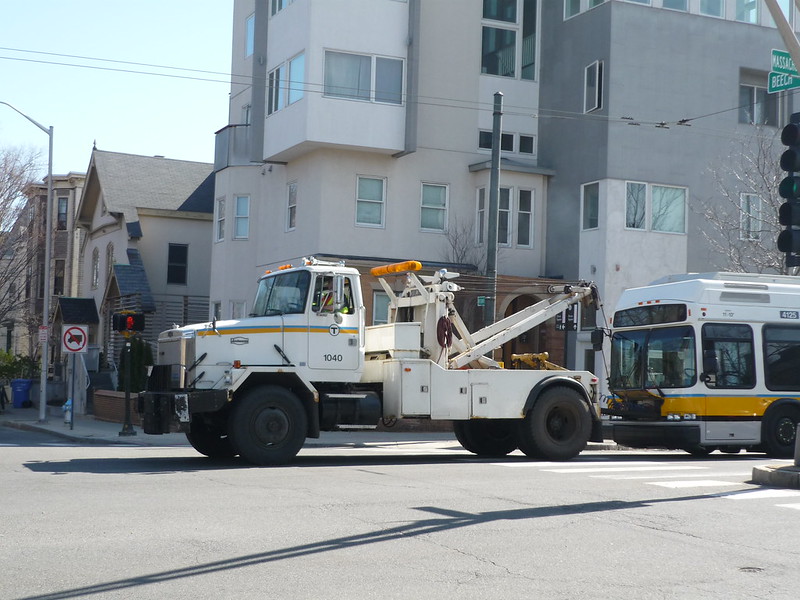Archive for the ‘TRIZ’ Category
The Difficulty of Goal Setting in Domains of High Uncertainty
 When you work in domains of high uncertainty, creating goals for the next year is exceptionally difficult.
When you work in domains of high uncertainty, creating goals for the next year is exceptionally difficult.
When you try to do something that hasn’t been done before, things may blow up instantly, things may work out after two years of hard work, or things may never work. So, how do you create the goal for that work? Do you give yourself one month to complete the work? And things haven’t worked out at the end of the month, do you stop the work or do you keep going? If it blows up instantly, but you think you know why, do you keep going? Do you extend the due date for the goal? At the start of the work, should the timeline have been set to one year instead of one month? And who decides that? And how do they decide?
When you have to create your goals for something that hasn’t been done before and the objectives of the work are defined by another team, yet that team hasn’t done the prework and cannot provide those objectives, what do you do? Do you create a goal for the other team to define the objectives? And what if you have no control over that team’s priorities and you don’t know when (or if) they’ll provide the needed information? What does a goal look like when you don’t know the objectives of the work nor do you know when (or if) you’ll get that information. Can you even create a goal for the work when you don’t know what that work is? And how do you estimate a completion date or the resource requirements (both the flavor and quantity) when you don’t know the objectives? What does that goal look like?
When you have to create your goals for a team of ten specialized people who each have unique skills, but you don’t know the objectives of the work, when that work can start, or when that work will finish, how do you cascade the team’s goals to each team members? What do their goals look like? Is the first goal to figure out the goal? How many goals does it take to fill up their year when you don’t know what the work is or how long it will take?
When working in domains of high uncertainty, the goals go like this: define the system as it is, define something you want to improve, try to improve it, and then do the next right thing. Unfortunately, that doesn’t fit well with the traditional process of setting yearly goals.
And your two questions should be: How do you decide what to improve? and How do you choose the next right thing?
Image credit — Rab Lawrence
Radical Cost Reduction and Reinvented Supply Chains
 As geopolitical pressures rise, some countries that supply the parts that make up your products may become nonviable. What if there was a way to reinvent the supply chain and move it to more stable regions? And what if there was a way to guard against the use of child labor in the parts that make up your product? And what if there was a way to shorten your supply chain so it could respond faster? And what if there was a way to eliminate environmentally irresponsible materials from your supply chain?
As geopolitical pressures rise, some countries that supply the parts that make up your products may become nonviable. What if there was a way to reinvent the supply chain and move it to more stable regions? And what if there was a way to guard against the use of child labor in the parts that make up your product? And what if there was a way to shorten your supply chain so it could respond faster? And what if there was a way to eliminate environmentally irresponsible materials from your supply chain?
Our supply chains source parts from countries that are less than stable because the cost of the parts made in those countries is low. And child labor can creep into our supply chains because the cost of the parts made with child labor is low. And our supply chains are long because the countries that make parts with the lowest costs are far away. And our supply chains use environmentally irresponsible materials because those materials reduce the cost of the parts.
The thing with the supply chains is that the parts themselves govern the manufacturing processes and materials that can be used, they dictate the factories that can be used and they define the cost. Moving the same old parts to other regions of the world will do little more than increase the price of the parts. If we want to radically reduce cost and reinvent the supply chain, we’ve got to reinvent the parts.
There are methods that can achieve radical cost reduction and reinvent the supply chain, but they are little known. The heart of one such method is a functional model that fully describes all functional elements of the system and how they interact. After the model is complete, there is a straightforward, understandable, agreed-upon definition of how the product functions which the team uses to focus the go-forward design work. And to help them further, the method provides guidelines and suggestions to prioritize the work.
I think radical cost reduction and more robust supply chains are essential to a company’s future. And I am confident in the ability of the methods to deliver solid results. But what I don’t know is: Is the need for radical cost reduction strong enough to cause companies to adopt these methods?
“Zen” by g0upil is licensed under CC BY-SA 2.0.
The first step is to understand the system as it is.
 If there’s a recurring problem, take the time to make sure the system hasn’t changed since last time and make sure the context and environment are still the same. If everything is the same, and there are no people involved in the system, it’s a problem that resides in the clear domain. Here’s a link from Dave Snowden who talks about the various domains. In this video, Dave calls this domain the “simple” domain. Solve it like you did last time.
If there’s a recurring problem, take the time to make sure the system hasn’t changed since last time and make sure the context and environment are still the same. If everything is the same, and there are no people involved in the system, it’s a problem that resides in the clear domain. Here’s a link from Dave Snowden who talks about the various domains. In this video, Dave calls this domain the “simple” domain. Solve it like you did last time.
If there’s a new problem, take the time to understand the elements of the system that surround the problem. Define the elements and define how they interact, and define how they set the context and constraints for the problem. And then, define the problem itself. Define when it happens, what happens just before, and what happens after. If there are no people involved, if the solution is not immediately evident, if it’s a purely mechanical, electromechanical, chemical, thermal, software, or hardware, it’s a problem in the complicated domain (see Dave’s video above) and you’ll be able to solve it with the right experts and enough time.
If you want to know the next evolution of the system, how it will develop and evolve, the situation is more speculative and there’s no singular answer. Still, the first step is the same – take the time to understand the elements of the system and how they interact. Then, look back in time and learn the previous embodiments of the system and define its trajectory – how it evolved into its current state. If there has been consistent improvement along a singular line of goodness, it’s likely the system will want to continue to evolve in that direction. If the improvement has flattened, it’s likely the system will try to evolve along a different line of evolution.
I won’t go into the specifics of lines of evolution of technological systems, as it’s a big topic. But if you want to know more, here’s a nice description of evolution along the line of adaptability by my teacher, Victor Fey – The best products know how to adapt.
If there are people involved with the system, it’s a complex system (see Dave’s video). (There are complex systems that don’t involve people, but I find this a good way to talk about complex systems.) The first step is to define the system as it is, but because the interactions among the elements are not predictable, your only hope is to probe, sense, and respond by doing more of what works and less of what doesn’t. Thanks to Dave Snowden for that language.
The first step is always to understand the system as it is.
“Space – Antennae Galaxies” by Trodel is licensed under CC BY-SA 2.0.
Free Resources
 Since resources are expensive, it can be helpful to see the environment around your product as a source of inexpensive resources that can be modified to perform useful functions. Here are some examples.
Since resources are expensive, it can be helpful to see the environment around your product as a source of inexpensive resources that can be modified to perform useful functions. Here are some examples.
Gravity is a force you can use to do your bidding. Since gravity is always oriented toward the center of the earth, if you change the orientation of an object, you change the direction gravity exerts itself relative to the object. If you flip the object upside down, gravity will push instead of pull.
And it’s the same for buoyancy but in reverse. If you submerge an object of interest in water and add air (bubbles) from below, the bubbles will rise and push in areas where the bubbles collect. If you flip over the object, the bubbles will collect in different areas and push in the opposite direction relative to the object.
And if you have water and bubbles, you have a delivery system. Add a special substance to the air which will collect at the interface between the water and air and the bubbles will deliver it northward.
If you have motion, you also have wind resistance or drag force (but not in deep space). To create more force, increase speed or increase the area that interacts with the moving air. To change the direction of the force relative to the object, change the orientation of the object relative to the direction of motion.
If you have water, you can also have ice. If you need a solid substance look to the water. Flow water over the surface of interest and pull out heat (cool) where you want the ice to form. With this method, you can create a protective coating that can regrow as it gets worn off.
If you have water, you can make ice to create force. Drill a blind hole in a piece of a brittle material (granite), fill the hole with water, and freeze the water by cooling the granite (or leave it outside in the winter). When the water freezes it will expand, push on the granite and break it.
These are some contrived examples, but I hope they help you see a whole new set of free resources you can use to make your magic.
Thank you, VF.
Image credit – audi_insperation
How To Solve Transparent Problems
 One of the best problems to solve for your customers is the problem they don’t know they have. If you can pull it off, you will create an entirely new value proposition for them and enable them to do things they cannot do today. But the problem is they can’t ask you to solve it because they don’t know they have it.
One of the best problems to solve for your customers is the problem they don’t know they have. If you can pull it off, you will create an entirely new value proposition for them and enable them to do things they cannot do today. But the problem is they can’t ask you to solve it because they don’t know they have it.
To identify problems customs can’t see, you’ve got to watch them go about their business. You’ve got to watch all aspects of their work and understand what they do and why they do it that way. And it’s their why that helps you find the transparent problems. When they tell you their why, they tell you the things they think cannot change and the things they consider fundamental constraints. Their whys tell you what they think is unchangeable. And from their perspective, they’re right. These things are unchangeable because they don’t know what’s possible with new technologies.
Once you know their unchangeable constraints, choose one to work on and turn it into a tight problem statement. Then use your best tools and methods to solve it. Once solved, you’ve got to make a functional prototype and show them in person. Without going back to them with a demonstration of a functional prototype, they won’t believe you. Remember, you did something they didn’t think was possible and changed the unchangeable.
When demonstrating the prototype to the customer, just show it in action. Don’t describe it, just show them and let them ask questions. Listen to their questions so you can see the prototype through their eyes. And to avoid leading the witness, limit yourself to questions that help you understand why they see the prototype as they do. The way they see the prototype will be different than your expectations, and that difference is called learning. And if you find yourself disagreeing with them, you’re doing it wrong.
This first prototype won’t hit the mark exactly, but it will impress the customer and it will build trust with them. And because they watched the prototype in action, they will be able to tell you how to improve it. Or better yet, with their newfound understanding of what’s possible, they might be able to see a more meaningful transparent problem that, once solved, could revolutionize their industry.
Customers know their work and you know what’s possible. And prototypes are a great way to create the future together.
“Transparent” by Rene Mensen is licensed under CC BY 2.0.
What do you like to do?
 I like to help people turn complex situations into several important learning objectives.
I like to help people turn complex situations into several important learning objectives.
I like to help people turn important learning objectives into tight project plans.
I like to help people distill project plans into a single-page spreadsheet of who does what and when.
I like to help people start with problem definition.
I like to help people stick with problem definition until the problems solve themselves.
I like to help people structure tight project plans based on resource constraints.
I like to help people create objective measures of success to monitor the projects as they go.
I like to help people believe they can do the almost impossible.
I like to help people stand three inches taller after they pull off the unimaginable.
I like to help people stop good projects so they can start amazing ones.
If you want to do more of what you like and less of what you don’t, stop a bad project to start a good one.
So, what do you like to do?
Image credit — merec0
What should we do next?
 Anonymous: What do you think we should do next?
Anonymous: What do you think we should do next?
Me: It depends. How did you get here?
Anonymous: Well, we’ve had great success improving on what we did last time.
Me: Well, then you’ll likely do that again.
Anonymous: Do you think we’ll be successful this time?
Me: It depends. If the performance/goodness has been flat over your last offerings, then no. When performance has been constant over the last several offerings it means your technology is mature and it’s time for a new one. Has performance been flat over the years?
Anon: Yes, but we’ve been successful with our tried-and-true recipe and the idea of creating a new technology is risky.
Me: All things have a half-life, including successful business models and long-in-the-tooth technologies, and your success has blinded you to the fact that yours are on life support. Developing a new technology isn’t risky. What’s risk is grasping tightly to a business model that’s out of gas.
Anon: That’s harsh.
Me: I prefer “truthful.”
Anon: So, we should start from scratch and create something altogether new?
Me: Heavens no. That would be a disaster. Figure out which elements are blocking new functionality and reinvent those. Hint: look for the system elements that haven’t changed in a dog’s age and that are shared by all your competitors.
Anon: So, I only have to reinvent several elements?
Me: Yes, but probably fewer than several. Probably just one.
Anon: What if we don’t do that?
Me: Over the next five years, you’ll be successful. And then in year six, the wheels will fall off.
Anon: Are you sure?
Me: No, they could fall off sooner.
Anon: How do you know it will go down like that?
Me: I’ve studied systems and technologies for more than three decades and I’ve made a lot of mistakes. Have you heard of The Voice of Technology?
Anon: No.
Me: Well, take a bite of this – The Voice of Technology. Kevin Kelly has talked about this stuff at great length. Have you read him?
Anon: No.
Me: Here’s a beauty from Kevin – What Technology Wants. How about S-curves?
Anon: Nope.
Me: Here’s a little primer – Beyond Dead Reckoning. How about Technology Forecasting?
Anon: Hmm. I don’t think so.
Me: Here’s something from Victor Fey, my teacher. He worked with Altshuller, the creator of TRIZ – Guided Technology Evolution. I’ve used this method to predict several industry-changing technologies.
Anon: Yikes! There’s a lot here. I’m overwhelmed.
Me: That’s good! Overwhelmed is a sign you realize there’s a lot you don’t know. You could be ready to become a student of the game.
Anon: But where do I start?
Me: I’d start Wardley Maps for situation analysis and LEANSTACK to figure out if customers will pay for your new offering.
Anon: With those two I’m good to go?
Me: Hell no!
Anon: What do you mean?
Me: There’s a whole body of work to learn about. Then you’ve got to build the organization, create the right mindset, select the right projects, train on the right tools, and run the projects.
Anon: That sounds like a lot of work.
Me: Well, you can always do what you did last time. END.
“he went that way matey” by jim.gifford is licensed under CC BY-SA 2.0
If you’re not creating derision, why bother?
 When you see good work, say so.
When you see good work, say so.
When you see exceptional work, say so in public.
When you’ve had good teachers, be thankful.
When you’ve had exceptional teachers, send them a text because texts are personal.
When you do great work and no one acknowledges it, take some time to feel the pain and get back to work.
When you do great work and no one acknowledges it, take more time to feel the pain and get back to work.
When you’ve done great work, tell your family.
When you’ve done exceptional work, tell them twice.
When you do the work no one is asking for, remember your time horizon is longer than theirs.
When you do the work that threatens the successful business model, despite the anguish it creates, keep going.
When they’re not telling you to stop, try harder.
When they’re telling you to stop it’s because your work threatens. Stomp on the accelerator.
When you can’t do a project because the ROI is insufficient, that’s fine.
When no one can calculate an ROI because no one can imagine a return, that’s better.
When you give a little ground on what worked, you can improve other dimensions of goodness.
When you outlaw what worked, you can create new market segments.
When everyone understands why you’re doing it, your work may lead to something good.
When no one understands why you’re doing it, your work may reinvent the industry.
When you do new work, don’t listen to the critics. Do it despite them.
When you do work that threatens, you will be misunderstood. That’s a sign you’re on to something.
When you want credit for the work, you can’t do amazing work.
When you don’t need credit for the work, it opens up design space where the amazing work lives.
When your work makes waves, that’s nice.
When your work creates a tsunami, that’s better.
When you’re willing to forget what got you here, you can create what could be.
When you’re willing to disrespect what got you here, you can create what couldn’t be.
When your work is ignored, at least you’re doing something different.
When you and your work are derided, you’re doing it right.
Image credit — Herry Lawford
It’s time to start starting.
 What do we do next? I don’t know
What do we do next? I don’t know
What has been done before?
What does it do now?
What does it want to do next?
If it does that, who cares?
Why should we do it? I don’t know.
Will it increase the top line? If not, do something else.
Will it increase the bottom line? If so, let someone else do it.
What’s the business objective?
Who will buy it? I don’t know.
How will you find out?
What does it look like when you know they’ll buy it?
Why do you think it’s okay to do the work before you know they’ll buy it?
What problem must be solved? I don’t know.
How will you define the problem?
Why do you think it’s okay to solve the problem before defining it?
Why do you insist on solving the wrong problem? Don’t you know that ready, fire, aim is bad for your career?
Where’s the functional coupling? When will you learn about Axiomatic Design?
Where is the problem? Between which two system elements?
When does the problem happen? Before what? During what? After what?
Will you separate in time or space?
When will you learn about TRIZ?
Who wants you to do it? I don’t know.
How will you find out?
When will you read all the operating plans?
Why do you think it’s okay to start the work before knowing this?
Who doesn’t want you to do it? I don’t know.
How will you find out?
Who looks bad if this works?
Who is threatened by the work?
Why do you think it’s okay to start the work before knowing this?
What does it look like when it’s done? I don’t know.
Why do you think it’s okay to start the work before knowing this?
What do you need to be successful? I don’t know.
Why do you think it’s okay to start the work before knowing this?
Starting is essential, but getting ready to start is even more so.
Image credit — Jon Marshall
When The Wheels Fall Off
 When your most important product development project is a year behind schedule (and the schedule has been revved three times), who would you call to get the project back on track?
When your most important product development project is a year behind schedule (and the schedule has been revved three times), who would you call to get the project back on track?
When the project’s unrealistic cost constraints wall of the design space where the solution resides, who would you call to open up the higher-cost design space?
When the project team has tried and failed to figure out the root cause of the problem, who would you call to get to the bottom of it?
And when you bring in the regular experts and they, too, try and fail to fix the problem, who would you call to get to the bottom of getting to the bottom of it?
When marketing won’t relax the specification and engineering doesn’t know how to meet it, who would you call to end the sword fight?
When engineering requires geometry that can only be made by a process that manufacturing doesn’t like and neither side will give ground, who would you call to converge on a solution?
When all your best practices haven’t worked, who would you call to invent a novel practice to right the ship?
When the wheels fall off, you need to know who to call.
If you have someone to call, don’t wait until the wheels fall off to call them. And if you have no one to call, call me.
Image credit — Jason Lawrence
How To Reduce Innovation Risk
 The trouble with innovation is it’s risky. Sure, the upside is nice (increased sales), but the downside (it doesn’t work) is distasteful. Everyone is looking for the magic pill to change the risk-reward ratio of innovation, but there is no pill. Though there are some things you can do to tip the scale in your favor.
The trouble with innovation is it’s risky. Sure, the upside is nice (increased sales), but the downside (it doesn’t work) is distasteful. Everyone is looking for the magic pill to change the risk-reward ratio of innovation, but there is no pill. Though there are some things you can do to tip the scale in your favor.
All problems are business problems. Problem solving is the key to innovation, and all problems are business problems. And as companies embrace the triple bottom line philosophy, where they strive to make progress in three areas – environmental, social and financial, there’s a clear framework to define business problems.
Start with a business objective. It’s best to define a business problem in terms of a shortcoming in business results. And the holy grail of business objectives is the growth objective. No one wants to be the obstacle, but, more importantly, everyone is happy to align their career with closing the gap in the growth objective. In that way, if solving a problem is directly linked to achieving the growth objective, it will get solved.
Sell more. The best way to achieve the growth objective is to sell more. Bottom line savings won’t get you there. You need the sizzle of the top line. When solving a problem is linked to selling more, it will get solved.
Customers are the only people that buy things. If you want to sell more, you’ve got to sell it to customers. And customers buy novel usefulness. When solving a problem creates novel usefulness that customers like, the problem will get solved. However, before trying to solve the problem, verify customers will buy what you’re selling.
No-To-Yes. Small increases in efficiency and productivity don’t cause customers to radically change their buying habits. For that your new product or service must do something new. In a No-To-Yes way, the old one couldn’t but the new one can. If solving the problem turns no to yes, it will get solved.
Would they buy it? Before solving, make sure customers will buy the useful novelty. (To know, clearly define the novelty in a hand sketch and ask them what they think.) If they say yes, see the next question.
Would it meet our growth objectives? Before solving, do the math. Does the solution result in incremental sales larger than the growth objective? If yes, see the next question.
Would we commercialize it? Before solving, map out the commercialization work. If there are no resources to commercialize, stop. If the resources to commercialize would be freed up, solve it.
Defining is solving. Up until now, solving has been premature. And it’s still not time. Create a functional model of the existing product or service using blocks (nouns) and arrows (verbs). Then, to create the problem(s), add/modify/delete functions to enable the novel usefulness customers will buy. There will be at least one problem – the system cannot perform the new function. Now it’s time to take a deep dive into the physics and bring the new function to life. There will likely be other problems. Existing functions may be blocked by the changes needed for the new function. Harmful actions may develop or some functions will be satisfied in an insufficient way. The key is to understand the physics in the most complete way. And solve one problem at a time.
Adaptation before creation. Most problems have been solved in another industry. Instead of reinventing the wheel, use TRIZ to find the solutions in other industries and adapt them to your product or service. This is a powerful lever to reduce innovation risk.
There’s nothing worse than solving the wrong problem. And you know it’s the wrong problem if the solution doesn’t: solve a business problem, achieve the growth objective, create more sales, provide No-To-Yes functionality customers will buy, and you won’t allocate the resources to commercialize.
And if the problem successfully runs the gauntlet and is worth solving, spend time to define it rigorously. To understand the bedrock physics, create a functional of the system, add the new functionality and see what breaks. Then use TRIZ to create a generic solution, search for the solution across other industries and adapt it.
The key to innovation is problem solving. But to reduce the risk, before solving, spend time and energy to make sure it’s the right problem to solve.
It’s far faster to solve the right problem slowly than to solve the wrong one quickly.
Image credit – Kate Ter Haar
 Mike Shipulski
Mike Shipulski